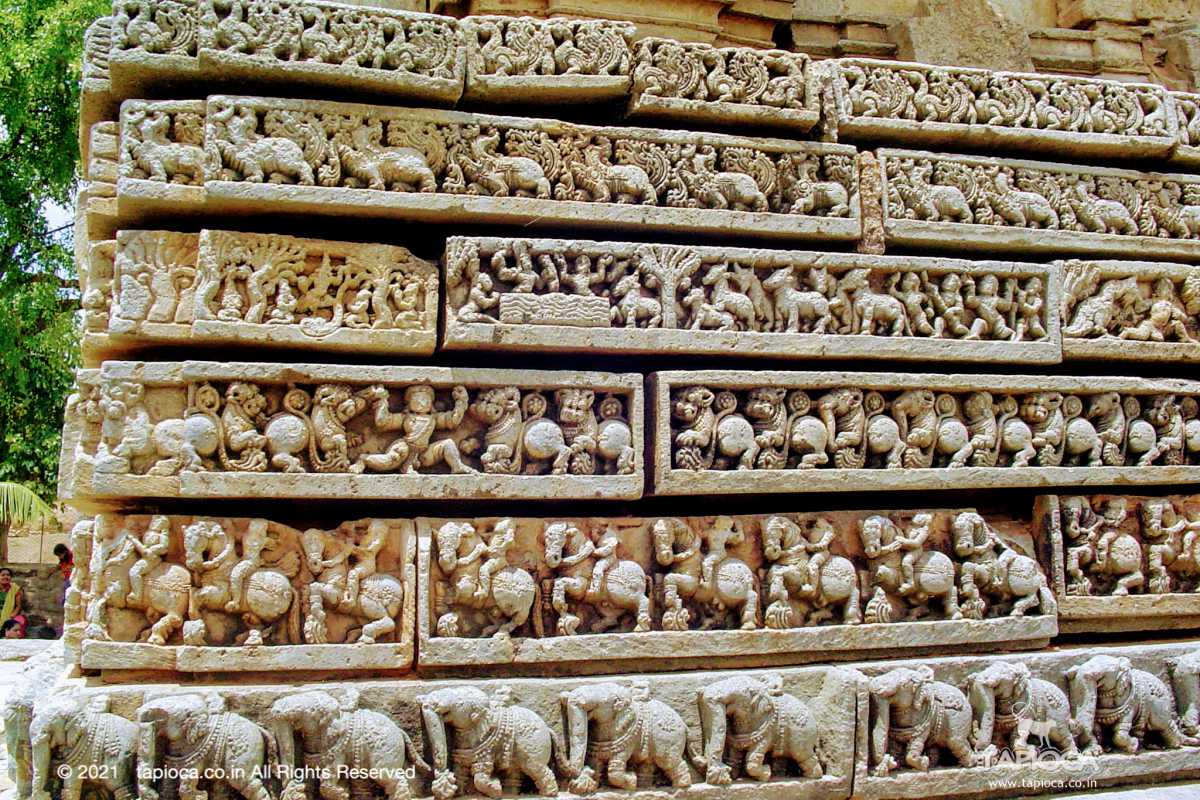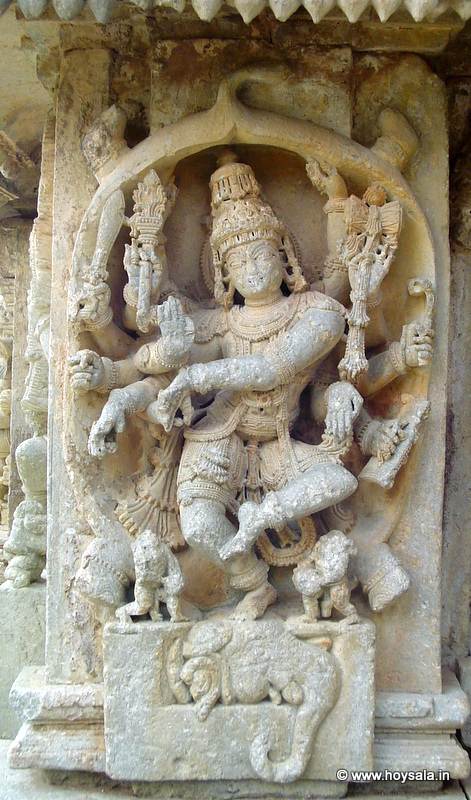Hoysala
Like in the history of many ancient kingdoms, to origin of the Hoysalas too are often narrated with a blend of myth and speculations.

Hoysala Emperor Vishnuvardhana and his Queen Shantala
Hoysala Emperor Vishnuvardhana and his Queen Shantala
T
he known history of the Hoysalas start by about 1000 AD, and they continued to be a notable power in the history of South India until about 1400 AD.A period of about 200 years or so years during the four centuries mentioned is generally considered as the heydays of the Hoysala Empire.
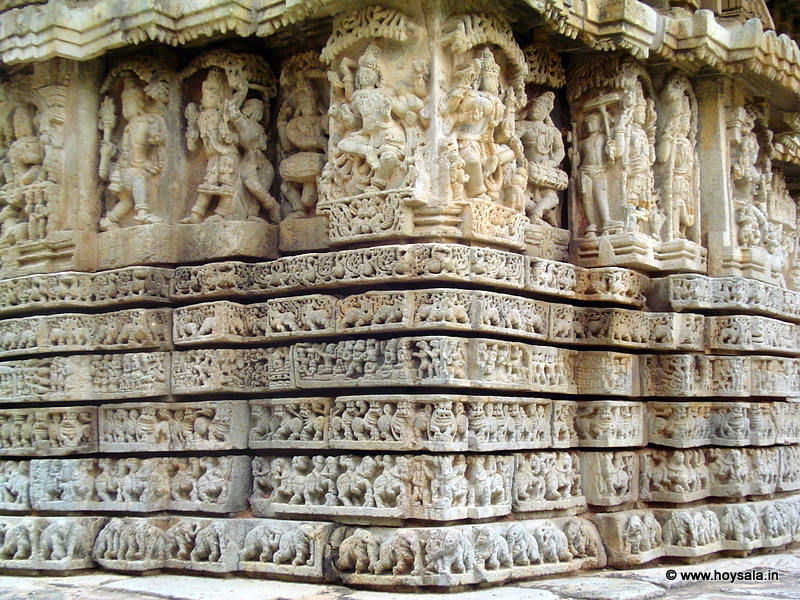
The 6 layered frieze over which the boldly executed sculptures are installed around the outer walls. All are done in soapstone.
The 6 layered frieze over which the boldly executed sculptures are installed around the outer walls. All are done in soapstone. The bottom represents a elephants is various postures, all unique, above which is a series of horses, the next band represents lions. Above this is a sequence of mythical themes carved in sequence (like in a comics strips). The top two bands are of peacock and a mythological creature.
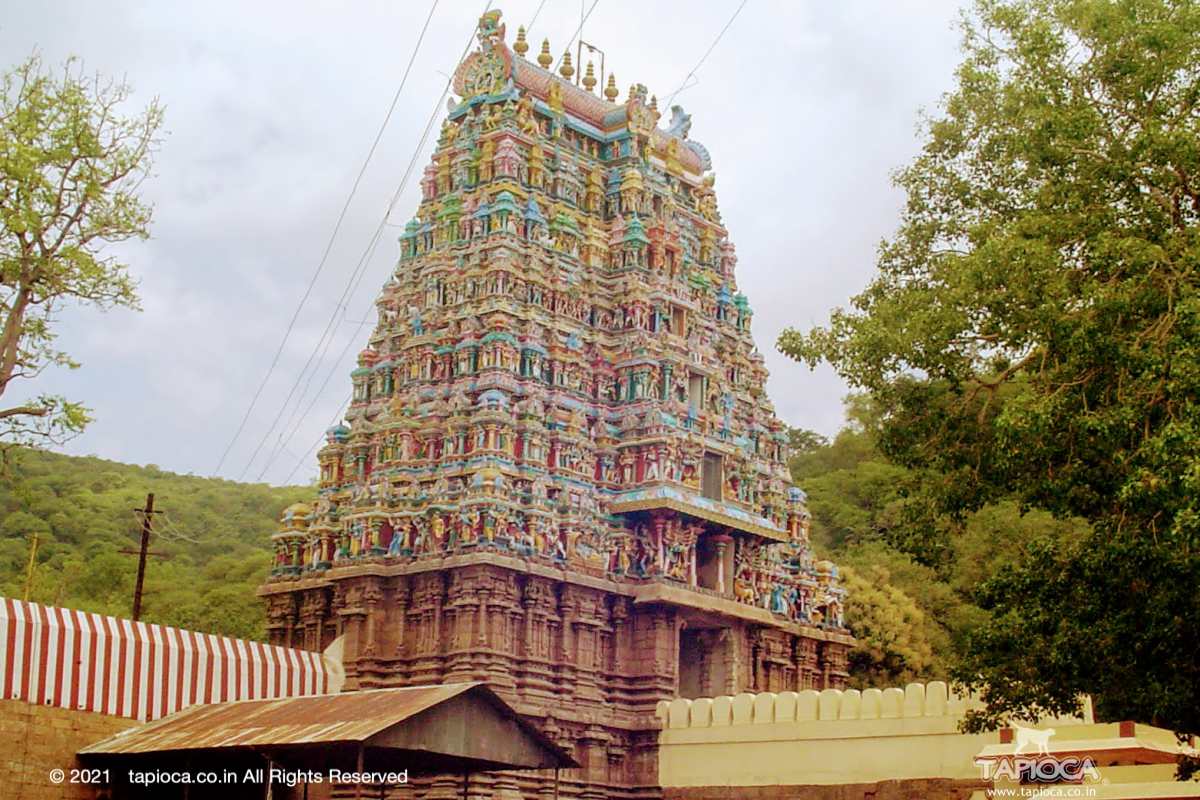 Madurai[/caption]
[caption id="attachment_7853" align="alignleft" width="1200"]
Madurai[/caption]
[caption id="attachment_7853" align="alignleft" width="1200"]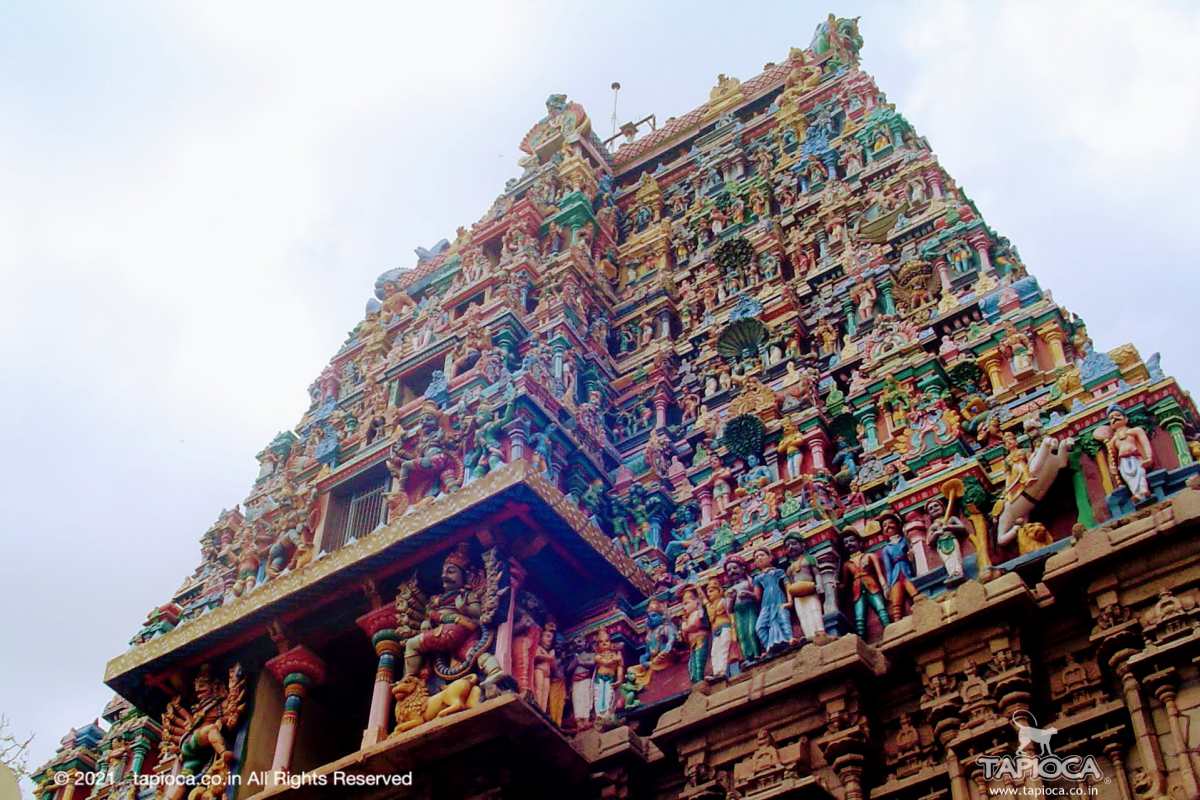 Madurai[/caption]
[caption id="attachment_7847" align="alignleft" width="1200"]
Madurai[/caption]
[caption id="attachment_7847" align="alignleft" width="1200"]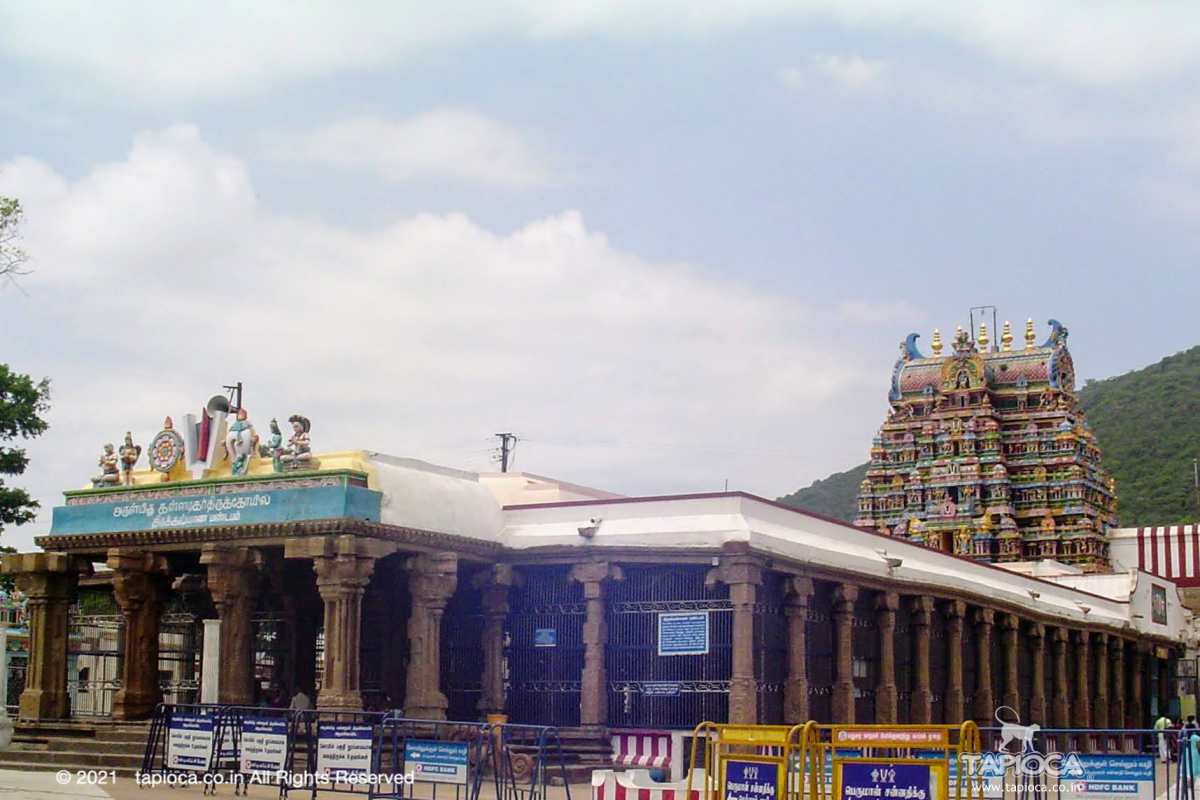 Madurai[/caption]
[caption id="attachment_7858" align="alignleft" width="1200"]
Madurai[/caption]
[caption id="attachment_7858" align="alignleft" width="1200"]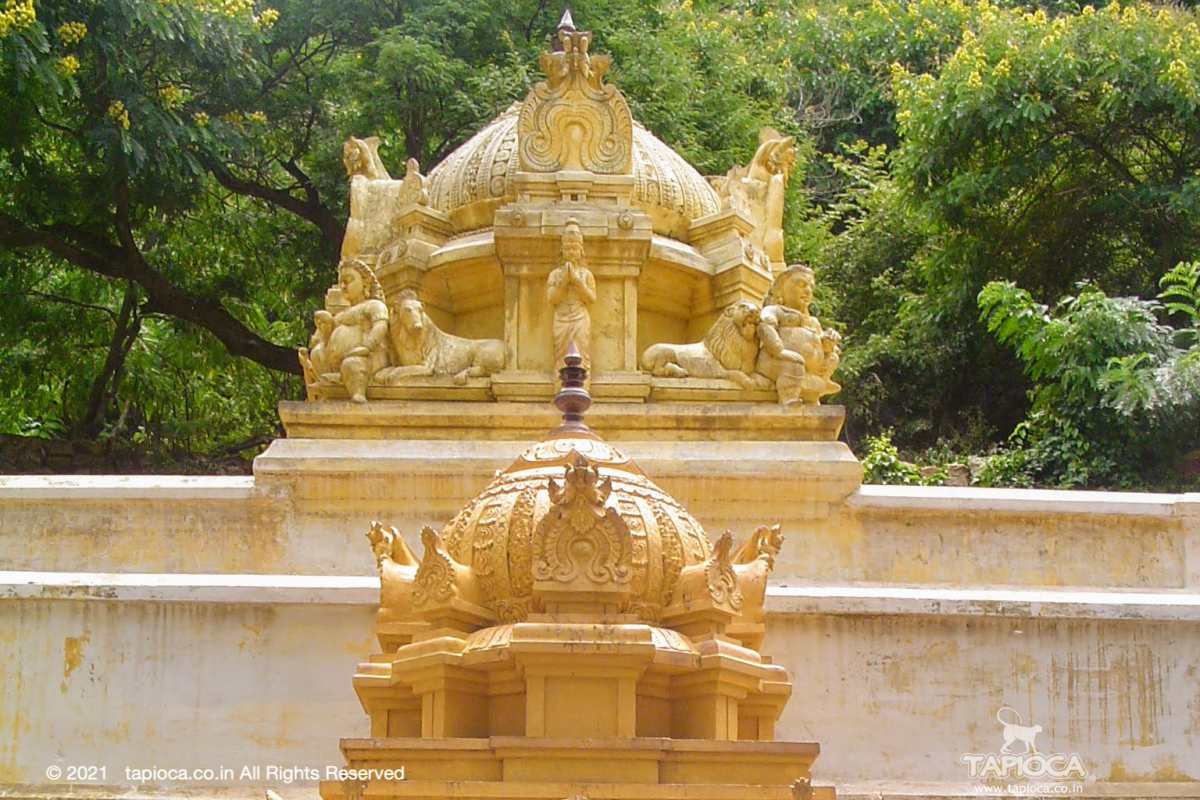 Madurai[/caption]
Madurai[/caption]
The temple’s heritage goes back to 6th century and the Hindu relic Mahabaratha has a reference to this temple having been worshipped by Yuthishtra and Arjuna.
Popularly known as “Azhagar Kovil” (Azhagar Temple in Tamil) or “Kallazhagar Kovil” (Kallars are a tribe fondly worshipping Azagar) this is an ancient temple in the vicinity of Madurai (21 KMs), Tamilnadu, India. The deity is Lord Vishnu, deriving the name Azhagar (celestial beauty) and praised by Alwars (Saints) of Vaishnavite culture, on worshipping the exquisite gold idol (made of special pure gold of high standard) beautifully carved.
This is one of the 108 Special Shrines (Divya Desams) of Lord Vishnu. You will see this temple situated at the foot of the Azhagar Hill and the surrounding was a dense forest once. Now because of inhabitation, the forest got eroded, but still you can’t miss the greenery around and especially at the top of the hillock, where another special shrine of Lord Murugan, known as Pazhamuthircholai (a jungle full of fruit trees) is situated.
The temple is found in the ruins of a fort – proclaiming the glory of Pandiya and Nayak Dynasties, ruling Madurai for centuries one after the other. Inscriptions on stone have been unearthed by experts to find that Malayathuvaja Pandiyan, son of Kulasekara Pandiyan (the King who built the renowned Meenakshi Temple at Madurai) was the earliest sponsor of many artistic stone carvings. Following his footsteps, many Kings of Nayak Dynasty, particularly the famous Thirumalai Nayakar (of Thirumalai Nayakar Mahal fame in Madurai) have liberally contributed for the growth of this temple.
Noopura Gangai, a perennial stream flowing from the Silambaru River on the upper hill in Pazhamuthircholai is said to contain medicinal value. You can get its water - diverted into the corridors of this temple through pipes. The sweet, pure water coming to us from amidst many herbs in the forest is filled in cans, bottles and what not by the devotees, as a rare commodity.
Innumerable legends and folklore are doing their rounds among Madurai people about this temple. Foremost of them is - Azhagar is the brother of Meenakshi Amman and gave her in wedlock to Sundareswarar. Every year during the Chithirai festival (April/May) which is a 10 day affair, Azhagar as the processional deity is taken to Madurai all the way. Temporary halts throughout the route for the villagers to worship the Lord are arranged.
On reaching Vaigai River, the deity carried in a decorated palanquin, takes a holy dip in the river, amidst a sea of humanity gathered from all parts of India. (He returns back half-way since the marriage had taken place already and this is being enacted year after year traditionally).
Another notable deity at Azhagar Temple is Karuppanna Swamy, the family-deity of a number of people in and around Madurai. (Names like Azhagar; Azhagu; Azhaguraja; Karuppannan; Karuppaiah are most commonly prevalent among Madurai people). At the sanctum of Karuppanna Swamy, nobody dares to lie for fear of his anger and many arbitrations on family feuds are settled on swearing here.
Azhagar Temple is easily reachable from Madurai – regular town buses (No.44) are run from Madurai Periyar Central Bus stand or by tourist cars (Rs.500). Better to stay at Madurai which has best hotels on all budgets.
[caption id="attachment_7856" align="alignleft" width="1200"] Madurai[/caption]
Madurai[/caption]
[caption id="attachment_7853" align="alignleft" width="1200"] Madurai[/caption]
Madurai[/caption]
[caption id="attachment_7847" align="alignleft" width="1200"] Madurai[/caption]
Madurai[/caption]
[caption id="attachment_7858" align="alignleft" width="1200"] Madurai[/caption]
Madurai[/caption]
This is another piece of info for those of you who are new to India in general. The native Indians per se would not require such a deliberation as their instinct is already seasoned than a novice visitor to India.
Without much of preface let us get to the subject. We are talking about the so called touts one has to deal with when visiting the popular attractions in India. So who is a tout anyway?
Well, we are talking about someone who is irritatingly aggressive, not courteous , do not take a polite no as an answer, and of course with an ulterior profit motive. In short someone who is trying to exploit ignorance or situation of a novice visitor.
Having said that we are not talking about everyone who is trying to sell anything to a visitor. Shrewd and aggressive they may be, but as long as fair and courteous you would not have any complaint either.
A tout usually don't take a no as an answer. The real problem lies there. They are infinitely optimistic and pester a prospective customer to the limit. You know the getting under the skin effect.
You come out of a railway station in a popular tourist town. Someone - in fact a bunch of them - offers a taxi service or hotel booking. A mob chase you, they lure you by elbowing each other. Some how you lug that huge backpack and nudges your way out. So far so good. Nothing abnormal . This is India at her chaotic best. By now you've almost wriggled out of the crowd , the great majority of the mob now retreats and run after another batch of passengers coming out of the railway station. You no more feels like a pop star which was a case a minute earlier. However a few lingers on around you. So far the plot has followed verbatim the classic Indian railway station scenario.
Now starts the part two of action. You've already done your research and finalized the hotel you are going to stay. Or at least you are sure of the area to which you want to go. You enquires the taxi driver. In all probability he would quote a rate up-front, reasonable or unreasonable. You either agree for it , or negotiates , if you are confident enough of a better rate. That who it ought to be.
Sometimes the story takes a slight twist. The man informs you that the hotel you are enquiring about was burned down or got closed recently or something as convincing like that. This is your first serious signal that a tout is around. Your doubt will be rather confirmed soon when he tells you that there is a better hotel he can take you. And what happens if you agree to it ? You get bad rate and he gets the commission.
The scope is generally expanded by including an offer to a 'nearby' souvenir shop that gives 'special' rates.
Though detecting a tout is rather easy , there is no 'standard operating procedure' to deal with them. Avoid a suspected deal if possible, at least stop the dealings the moment you realize that you are taken for a ride.
Having said that , a little understanding of the background goes a long way in 'dealing' with a tout. First of all you need to change yourself into the India mode.
What does it means ? A few things, especially related to etiquettes and reactions. In the west people are programmed to react or respond. Not so in India. Not giving a response is also a response in India. If one thing a tout can not stand in the world is a no response situation. They are smart enough to not waste their time on a
If you think a polite ( or firm ) no is a decline , you are way off the mark. For a tout 'no' is read as 'may be' and a no response is 'no'!
If you got this concept right, you can evade an unsolicited pestering tout, if not bargain well with them.
Look at this. A batch of greedy tourists were lured by an unusually high rate in currency conversion. Yes they got it, but it was some colorful and neatly printed lottery tickets than the Indian currency notes! The moral of the story is simple. Be prudent; do not go after any unrealistic offers; rub throughly to find out where the catch is.
So far we've talked about touts as if they are an unwelcome elements , that has to be kept at an arms distance. Are they really bad with a con intention always?
Not exactly. At least not all the touts are bad.
The trick is in using them to your advantage. A tout melts like bee wax , the moment he realize that you are in control and willing for his service. After all he is interested in business rather than deriving some pleasure out of pestering people. How that chemistry is established is in your hand, at least partially.
A tout knows the area like the back of his palm. Just imagine you are interested in the few monuments off the well trodden tourist trail. And the tout can take you to the nook and cranny of an alien place with amazing efficiency. Left alone, probably you would not have visited that 'hidden gem' that is not mentioned in any guide books.
Suddenly you realize that the tout is the best local resource available for you and indeed friendly. And once you commission a tout , you are practically a 'sold' item for the rest of the touts. Meaning , you are no more mobbed by the rest. Though the touts are often frown up on , it is not unusual to find touts who makes your tour rather memorable. Some of them are astonishingly knowledgeable and you no more wants to think that he is a tout.
So if you are little lucky , a lot patient and bit curious , a useful tout is not too far away.
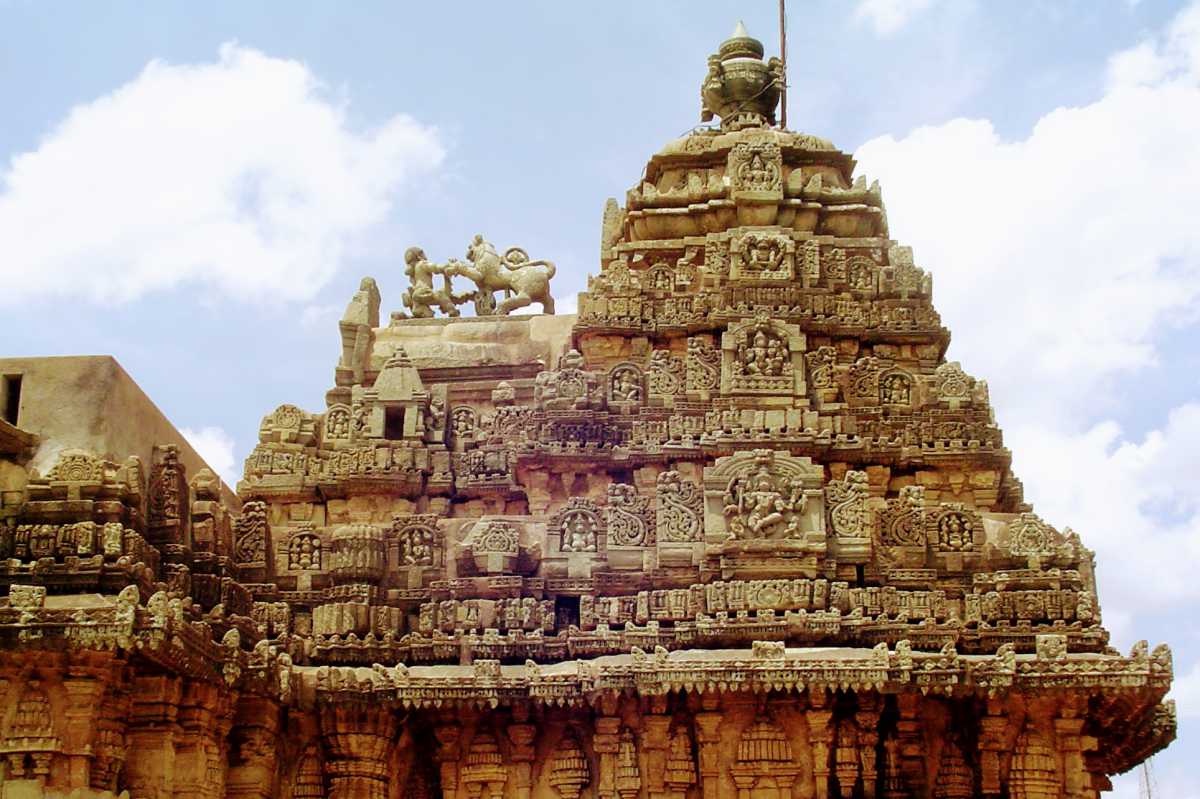
Basaralu
Hoysala crest- the hero fighting a lion- at the tower of the Mallikarjuna temple of Basaralu
 Madurai[/caption]
[caption id="attachment_7853" align="alignleft" width="1200"]
Madurai[/caption]
[caption id="attachment_7853" align="alignleft" width="1200"] Madurai[/caption]
[caption id="attachment_7847" align="alignleft" width="1200"]
Madurai[/caption]
[caption id="attachment_7847" align="alignleft" width="1200"] Madurai[/caption]
[caption id="attachment_7858" align="alignleft" width="1200"]
Madurai[/caption]
[caption id="attachment_7858" align="alignleft" width="1200"] Madurai[/caption]
Madurai[/caption]
The temple’s heritage goes back to 6th century and the Hindu relic Mahabaratha has a reference to this temple having been worshipped by Yuthishtra and Arjuna.
Popularly known as “Azhagar Kovil” (Azhagar Temple in Tamil) or “Kallazhagar Kovil” (Kallars are a tribe fondly worshipping Azagar) this is an ancient temple in the vicinity of Madurai (21 KMs), Tamilnadu, India. The deity is Lord Vishnu, deriving the name Azhagar (celestial beauty) and praised by Alwars (Saints) of Vaishnavite culture, on worshipping the exquisite gold idol (made of special pure gold of high standard) beautifully carved.
This is one of the 108 Special Shrines (Divya Desams) of Lord Vishnu. You will see this temple situated at the foot of the Azhagar Hill and the surrounding was a dense forest once. Now because of inhabitation, the forest got eroded, but still you can’t miss the greenery around and especially at the top of the hillock, where another special shrine of Lord Murugan, known as Pazhamuthircholai (a jungle full of fruit trees) is situated.
The temple is found in the ruins of a fort – proclaiming the glory of Pandiya and Nayak Dynasties, ruling Madurai for centuries one after the other. Inscriptions on stone have been unearthed by experts to find that Malayathuvaja Pandiyan, son of Kulasekara Pandiyan (the King who built the renowned Meenakshi Temple at Madurai) was the earliest sponsor of many artistic stone carvings. Following his footsteps, many Kings of Nayak Dynasty, particularly the famous Thirumalai Nayakar (of Thirumalai Nayakar Mahal fame in Madurai) have liberally contributed for the growth of this temple.
Noopura Gangai, a perennial stream flowing from the Silambaru River on the upper hill in Pazhamuthircholai is said to contain medicinal value. You can get its water - diverted into the corridors of this temple through pipes. The sweet, pure water coming to us from amidst many herbs in the forest is filled in cans, bottles and what not by the devotees, as a rare commodity.
Innumerable legends and folklore are doing their rounds among Madurai people about this temple. Foremost of them is - Azhagar is the brother of Meenakshi Amman and gave her in wedlock to Sundareswarar. Every year during the Chithirai festival (April/May) which is a 10 day affair, Azhagar as the processional deity is taken to Madurai all the way. Temporary halts throughout the route for the villagers to worship the Lord are arranged.
On reaching Vaigai River, the deity carried in a decorated palanquin, takes a holy dip in the river, amidst a sea of humanity gathered from all parts of India. (He returns back half-way since the marriage had taken place already and this is being enacted year after year traditionally).
Another notable deity at Azhagar Temple is Karuppanna Swamy, the family-deity of a number of people in and around Madurai. (Names like Azhagar; Azhagu; Azhaguraja; Karuppannan; Karuppaiah are most commonly prevalent among Madurai people). At the sanctum of Karuppanna Swamy, nobody dares to lie for fear of his anger and many arbitrations on family feuds are settled on swearing here.
Azhagar Temple is easily reachable from Madurai – regular town buses (No.44) are run from Madurai Periyar Central Bus stand or by tourist cars (Rs.500). Better to stay at Madurai which has best hotels on all budgets.
[caption id="attachment_7856" align="alignleft" width="1200"] Madurai[/caption]
Madurai[/caption]
[caption id="attachment_7853" align="alignleft" width="1200"] Madurai[/caption]
Madurai[/caption]
[caption id="attachment_7847" align="alignleft" width="1200"] Madurai[/caption]
Madurai[/caption]
[caption id="attachment_7858" align="alignleft" width="1200"] Madurai[/caption]
Madurai[/caption]

